The Westfjords has just over one third of Iceland's coastline and therefore we have plenty of beautiful beaches and magnificent cliffs.
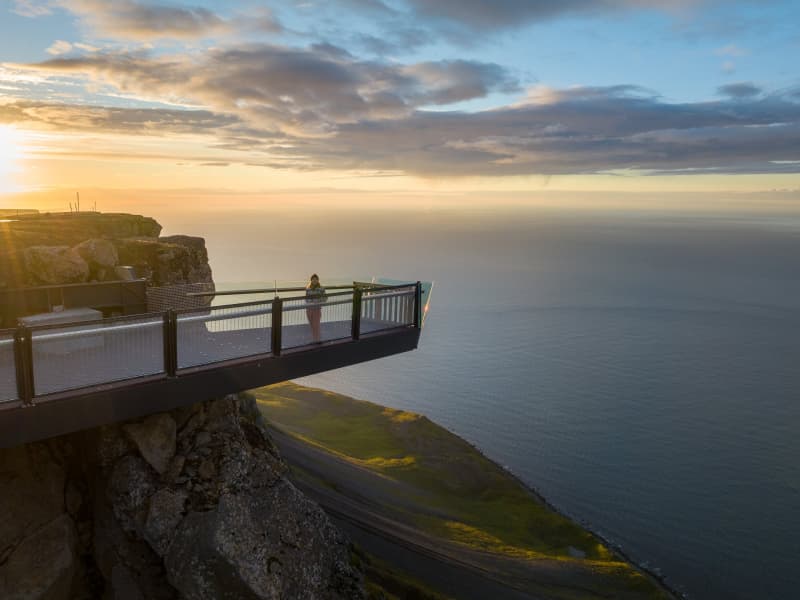
Outstanding Bolafjall
The most popular visiting point in Bolungarvík is the viewing platform on top of Bolafjall Mountain. The place offers a staggering view over Ísafjarðardjúp, Jökulfirðir and some people say all the way to Greenland. To get to Outstanding Bolafjall you have to drive up the road from Bolungarvík up to the radat sation situated at the summit of Bolafjall. The station was built by the Americans but is now controlled by the Icelandic coast guard. Following a visit to Bolafjall, or perhaps even before ascending, we highly recommend taking a coffee break and enjoying a leisurely stroll along the black sand beach in Skálavík.
Please note that access to the mountain road is contingent upon favorable conditions. Typically, the road is open from mid-June until mid-September.
View

Drangaskord
Drangaskörð stands as one of Iceland's most awe-inspiring yet often overlooked natural wonders. These seven rocky peaks, situated in the Árneshreppur municipality, dramatically extend into the sea. Resembling a row of jagged teeth, the peninsula stretches outward from Skarðafjall mountain, casting eerie shadows that have fueled imaginations for centuries.
View

Ingjaldssandur
Ingjaldssandur is a huge, lush valley facing the sea between Önundarfjörður and Dýrafjörður. Once home to dozens of farming folk, people used to get there by plane or boat. The rough mountain road into the valley is an attraction all of its own: for there are few more exciting or more scenic drives anywhere. These days the mountain-hemmed and beach-ended valley only has one working farm left. And lots of sheep. And a small church with an unusual Celtic cross on top. You may even be lucky enough to buy some of the farmer’s excellent handicrafts, jewellery and woollen goods.
View
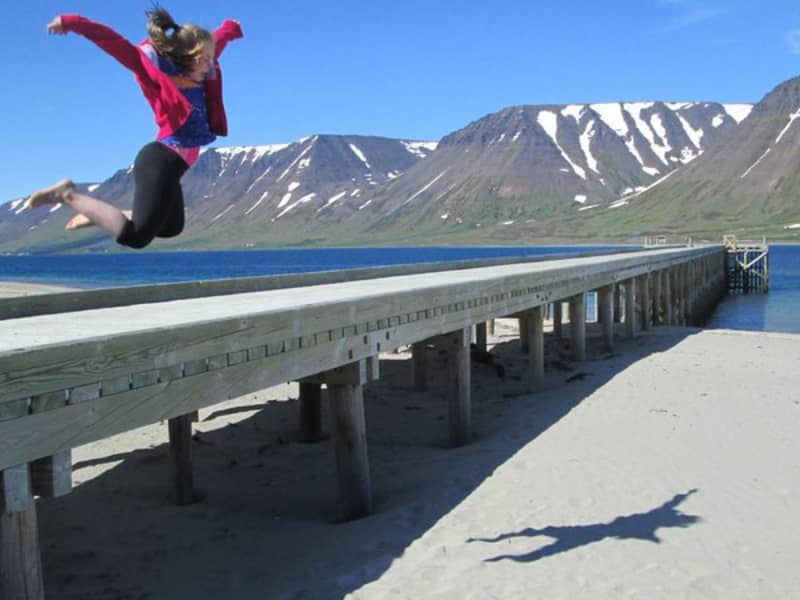
Holtsfjara
Önundarfjörður is a particularly pretty fjord, even by Westfjords standards. This is partly due to Holt beach, which is a sweeping golden-sand beach and dune system which curls out into the fjord and is a bit like Spain for a few hot days of the year. The rest of the time it's a great walk!
During the nesting season of Eider (April 15 to July 14), certain parts of the beach (like the dunes) are restricted to protect the eider ducks and their nests. Visitors are asked to respect these areas and stay clear of the marked nesting sites to ensure the birds can nest undisturbed.
View
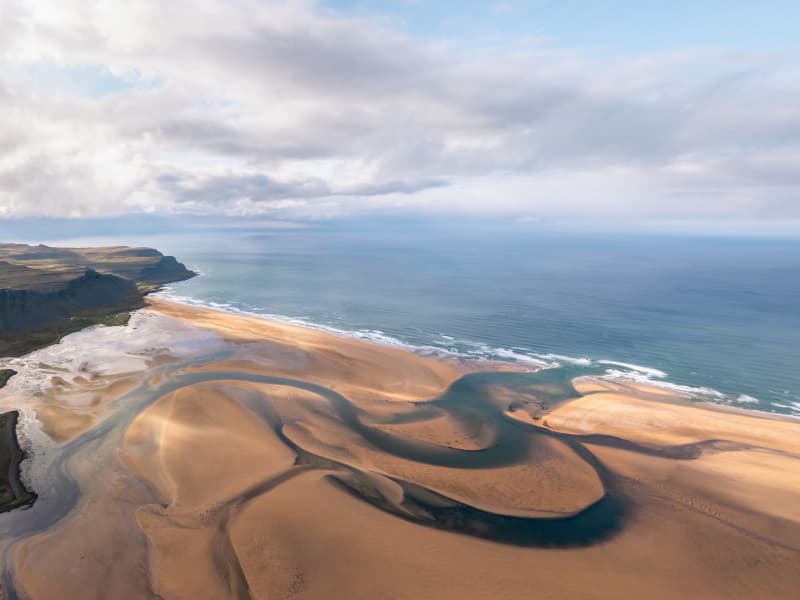
Rauðasandur
Rauðasandur (Red Sand) is precisely that: a beach with endless red sand. Well, not endless but 10 km is a lot.The striking tones of the sand shift with the light and weather, making each visit a unique experience. The beach is the biggest pearl in a string of coves with sand ranging in colours from white through yellow through red to black, and in coarseness from very fine to sharp seashells. It's a haven for seabirds and seals, offering unparalleled tranquility. You might want to step out of the car, get the camera out and start walking on the seemingly endless beach.
Admire the stunning view, with the majestic Snæfellsjökull glacier on the Sæfellsnes peninsula captivating your gaze in the distance.
View
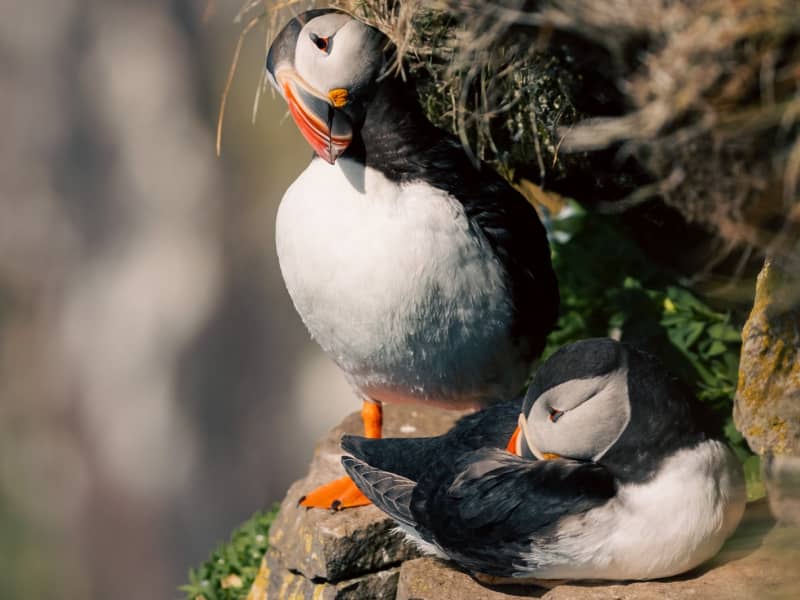
Látrabjarg
One of Europes biggest bird cliffs, a home to birds in unfathomable numbers. This westernmost point of Iceland is really a line of several cliffs, 14 kilometres long and up to 441 m high. And it’s as steep as it gets, dizzyingly so. Safe from foxes, the birds are fearless, and provide stunning photographic opportunities from close range. The puffins are the ones frequenting the grassy, higher part of the cliffs.
But look out, the edges are fragile and loose and the fall is high. Látrabjarg is thus deservedly the most visited tourist attraction in the Westfjords. The cliffs are easily accessible by car and when you’re there, a walk along the cliffs awaits. The whirling sensation will not fade, and neither will the memories.
View
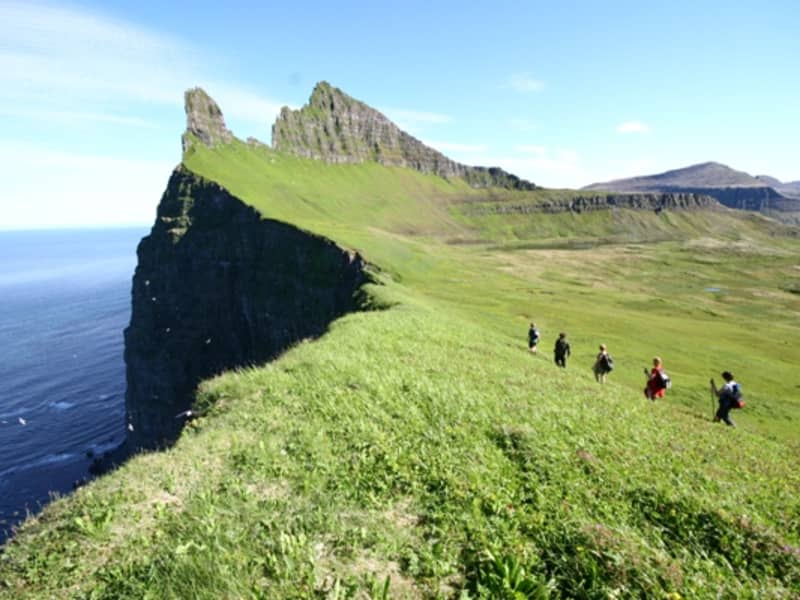
Hornstrandir
This territory of the Arctic fox has been uninhabited since the 1950s. As isolated as it was then, it attracts the casual half-day visitors and serious gore-tex hikers alike. Its main attractions are three. First, the bird cliffs surrounding the bay of Hornvík, are a magnet of gigantic proportions. On the eastern side of the bay the cliff reaches a height of more than 500 metres, and the birds are teeming. Second, as there are no infrastructure and the tourists few in relation to the sheer size of the area, the sense of remoteness is strong. You can hike days on end without seeing a single person. Additionally the phone connection is very poor, often there is no connection at all. The nature is pure and the tranquillity unmatched. Third, as the area is a haven for the Arctic fox (think hunting-ban and bird-packed cliffs), the chances of spotting one are high.
Most tours, especially day tours, depart from Ísafjörður. Hikers wanting to go on their own can also take boats from Bolungarvík and Norðurfjörður.
For further information on the Hornstrandir Nature Reserve, please visit https://ust.is/english/visiting-iceland/protected-areas/westfjords/hornstrandir/ . The Hornstrandir Visitor Centre is located in downtown Ísafjörður.
View
